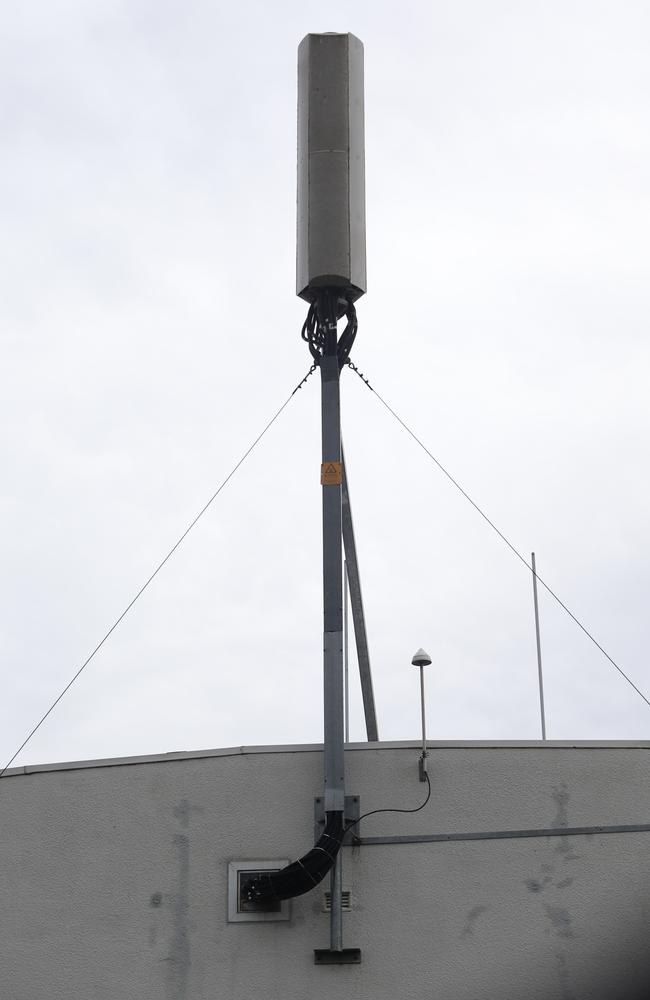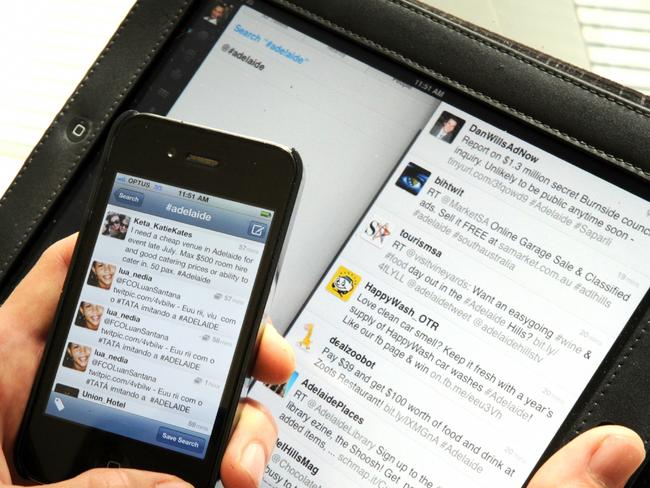Australian government spies and companies monitor billions of private mobile phone calls
AUSTRALIANS are addicted to mobile phones and social media, but just how secure are modern communication devices and who might be listening?

AUSTRALIA’S leading electronic spying expert, Professor Des Ball, simply refuses to use a mobile phone.
The Australian National University’s “living treasure”, who knows more about electronic intelligence gathering in cyberspace, outer space and on the earth than almost anyone, dismisses mobile phones and social media as completely insecure forms of communication.
The man who US President Jimmy Carter credits with saving the world with his frank advice on the perils of a limited US nuclear strike against the Soviet Union during the Cold War, might appear eccentric to today’s generation of Instagrammers, Tweeters and texting junkies, but his warnings about the pitfalls of mobile phones and the internet are based on a deep pool of knowledge.
Professor Ball said that intercepting a mobile phone call was as simple as identifying the number, buying an off-the-shelf scanner and pointing it at the mobile phone antennae erected on top of the city buildings around where the target number is located.
“Anyone who is serious about it and is only interested in a few numbers coming through a particular transponder can easily intercept mobile phone calls,” Professor Ball said.
“You can buy a scanner on eBay and scan the SHF (super high frequency) spectrum, enter the numbers in, monitor the transponders and you don’t need computer power to dig the information out.”

Professor Ball said he didn’t use a mobile phone simply because he could never know how the call would travel to its destination.
“The number of agencies possibly listening in or mining for metadata varies depending on the media being used,” he said.
“Any phone call that you make you have to think that there could be up to six government agencies likely to be listening.”
Governments have always been “serious” about intercepting communications and the corporate sector is developing a rapidly growing interest in the subject.
The explosion in social media and the global obsession with Facebook, Twitter, Instagram and texting means that vast mounts of bandwidth are completely clogged with garbage. All of it has to be sifted as government agencies and private operators search for “gems’’ of national security or industrial espionage information.
“Mobile phones are the real weak link, they have revolutionised communications and monitoring [spying],” Professor Ball said.

Landlines and satellite phones are not much better, but interceptors require either physical access or far greater levels of computer power to target calls of interest being made using those media.
Australia is a world leader in the dark arts of signals intelligence or “SIGINT” where vast sums of money and huge amounts of bandwidth and some very hi-tech ground stations in places such as Pine Gap near Alice Springs, Kojarena near Geraldton in WA and Shoal Bay east of Darwin have been installed to “hoover’’ up or process signals intercepted by satellites.
Kojarena is also home to a bank of super computers to relieve some of the pressure on the massive super computers at the Australian Signals Directorate headquarters in Building `M’ at Defence headquarters at Russell offices in Canberra.
“Enormous volumes of material are collected and processed to get a few gems of information,” Professor Ball said.
With the advent of fibre optic cable the percentage of international calls, emails and social media carried by satellite has dropped from 70 to about 30 per cent. The glass cable is vastly more secure than copper or microwave and it can carry huge amounts of data.
“Only very highly experienced professionals can infiltrate fibre optic cables,” Professor Ball said.
Among the most expert are the US Navy and its specially modified nuclear submarine called the USS Jimmy Carter. The boat can physically tap underwater cables by several means including the “bend and scrape” method where the cable is bent and the seal is cracked allowing photons to escape and be harvested by the submarine.

Australia’s satellite ground stations, operate under the so-called “five eyes” arrangement with the UK, USA, Canada and New Zealand, and they cover a vast area from the mid-Pacific to the mid-Indian Oceans. They intercept an array of signals from radio communications to phone calls focused mainly on Indonesian Palapa satellites that are also subcontracted to countries such as the Philippines or Papua New Guinea. Australia is responsible for 70 per cent of the South-East Asian “five eyes” domain.
Under other operations codenamed Reprieve and Stateroom, Australian embassies in cities such as Jakarta, Bangkok, Beijing, Dili, Kuala Lumpur, Hanoi and Port Moresby also house maximum-security ground stations that monitor local phone calls of people of interest such as Indonesian President Susilo Bambang Yudhoyono and his wife, exposed by American whistleblower Edward Snowden. In all of these cities, as well as in places such as Canberra and Sydney, specific mobile phones belonging to the Chinese or Russian ambassador or Consuls General are monitored automatically. When the number is activated the call is recorded and data is mined.
A huge amount of computer power is required to “mine” billions of phone calls, texts or tweets for metadata on issues that might raise a red flag by using terms such as “bomb” or “ammonium nitrate”.
Australian citizens are supposed to be protected from this army of electronic eavesdroppers by strict laws that forbid agencies such as the ASD from spying on their own citizens within Australia.
However thanks to the Snowden leaks we know that such protections count for little when it comes to the deeply interwoven and complex world of America’s spy agencies and their loyal allies including Australia and Britain.
A leaked slide prepared by the NSA’s Special Source Operations group proves the point; “Much of the world’s communications flow through the US. Your target’s communication could easily be flowing into and through the US,” it says.
Under programs with names such as Tempora, xKeystroke, Muscular, Egotistical, Prism, Giraffe and Oakstar the US National Security Agency harvests and stores up to five billion mobile phone calls a day from around the globe. The agency’s links with companies such as Facebook, Yahoo, Skype and Google have also been exposed by the Snowden leaks. Millions of Australians use these companies as a matter of course every day.
When a citizen makes a phone call a computer that determines whether the call travels via cable, microwave or satellite.
“The problem is that when the ASD is listening to foreign satellites it also picks up Australian communications,’’ Professor Ball said.
“So Australians can still get caught.’’



